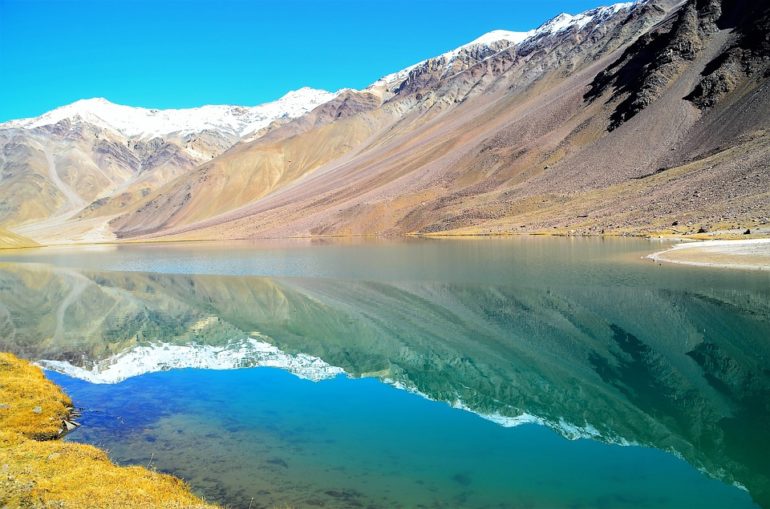Sprawling mountains, rich biodiversity, lush green covers, clear lakes, and the diverse culture – few of the many things set North-East apart from rest of India. While some parts of the ‘seven sisters’ still remain unexplored, there’s plenty that has caught people’s attention. ‘Scotland of India’, ‘Abode of Clouds’, ‘Wettest Place on Earth’, ‘Majestic Waterfalls’ – every place comes with its own epithet. From wildlife, natural wonders to rich culture; one can be sure that the views will be nothing short of breathtaking.
1. Krem Liat Prah: Meghalaya
Get all the ‘Indiana Jones’ feels as you go caving in Meghalaya. Yes, under the towering hills lie some of the deepest, darkest, longest caves of India. The state has 750 of them! Krem Liat Prah happens to be the longest cave system out of the 750. Situated in the Shnongrim Ridge of the Jaintia Hills, the caves stretch for about 34 kilometres! Inside the dark, dungeon-like caverns you’ll find stalactites emerging from the ceilings and stalagmites rising from the ground – together making for an eerie yet magnificent sight of nature’s wonder. Besides crawling to protect yourself from limestone spikes, you’ll also have to wade through waters to see the unknown. The manmade Aircraft Hangar inside the caves also make for a great attraction. Skydiving, trekking, paragliding are now passé. It’s time to take your expedition to the mysterious underground with caving!
Also read: Travel and Earn Good Karma at These 10 Destinations!
2. Majuli: Assam
Scenic is an understatement to describe India’s biggest river island – Majuli. The roaring Brahmaputra in the south and its anabranch Kherkutia Xuti in the north led to the formation of this picturesque island. Divine pink sunsets, vibrant hyacinth blossoms, glimmering rice fields, clear ponds, and flocks of migratory birds are all proof of nature’s bounty. Besides the flora and fauna, the skies and the waters, it is the people, their heritage and lifestyle that makes for the island’s beauty. Majuli is the hub for the neo-Vaishnavite culture making it exuberant with temples and monasteries. The culture of the region can be found in the native tribe’s traditions, their masks, evening festivities, dance-forms, and their arts like handloom and pottery.
Also read: 29 Kms Away From China Border, Mechuka In Arunachal Pradesh Is An Unexplored Paradise
3. Ziro: Arunachal Pradesh
Tall standing bamboos, aged blue pine trees or luscious paddy fields – pick what may, Ziro gives you a picture postcard background for all. Nestled in the valleys of Arunachal Pradesh, this UNESCO World Heritage Site lies in the Lower Subansiri district. The ‘Bamboo Grove’ at Ziro has giant timber bamboos spread over the area that attracts many visitors. A twin hillock – Dilopolyang Maniipolyang boasts of several hues of green and instantly fills you up with positivity. For a contrasting spectacle, Kile Pakho is the best place to be. You can see the mighty snow-capped Himalayas on one side and the widespread green Ziroplateau on the other. Only a panorama picture could encapsulate the beauty of the place. However, the Apatani Tribe of the Ziro valley are the ultimate show stealers! With their unique attire, facial tattoos, and nose plugs, the very friendly tribe accentuates the charm of the Ziro Valley.
Also read: Top 10 Bike Routes Across India You Have To Experience If You’re A Rider
4. Tawang: Arunachal Pradesh
If Shangri – La, the Himalayan utopia had an imagery, it would most definitely be Tawang. Sitting at 10,000 ft above sea level, the scenic town of Tawang works its magic on travellers just as it would in its mystical parallel universe. Here, in earthly dimensions, the enormous mountains, the valleys, cascading waterfalls, sprawling fields, and monasteries are what enchants the place. The history of the valley is strongly rooted in the Tibetan culture as it was once a part of Tibet. Talking of breathtaking views, there’s plenty in every nook and corner. But one that makes the cut in all the lists is the sight of the Tawang Monastery – the largest Buddhist monastery in India. The passes and the lakes make for other magnificent views. Sela Pass, the only high-altitude motorable mountain pass is a sight to behold. The beauty amplifies in winters with snow covering the roadway. For Instagrammers, Shong-tser Lake is going to give you plenty of hearts with its snowy mountains for the background and clear waters for the foreground.
Also read: Skydive Over The Snow Clad Mountains Of Himalayas In Nepal This November
5. Root Bridges of Cherrapunjee: Meghalaya
If the movie Avatar ever got a live-action version of itself, the most suitable location would be the southern slopes of the Khasi and Jaintia Hills of Meghalaya. Rivers gushing in the valleys, hazy sunlight cutting through the dense forest cover, soft river beds and the oh so beautiful man-made natural wonder – root bridges. Cherranpunjee is known to be the wettest place in the world owing to the generous downpour each year. The warm humid climate of the region has enabled the Indian rubber tree to flourish. How has it helped the people? The Khasi tribes saw a tremendous advantage in the tree’s powerful root system. With secondary roots branching over boulders and in streams, they saw it as an opportunity to use the roots to cross over bridges. No, they didn’t swing like Tarzan. Instead, they tied, pulled and twisted the roots in a way that it would naturally grow in the required direction. And voila! We have an architectural wonder. The trees are decades old and with each passing day, they get stronger. Some are so incredibly strong that they can hold up the weight of 50 people at once. Out of the many, the Double Decker Root Bridge stands out because the 150-year-old tree has two levels. Warning: The climb is not easy, but what the hell? It’s simply worth it!
LIKE Curly Tales on Facebook | Instagram| Twitter
You can subscribe to our newsletters

